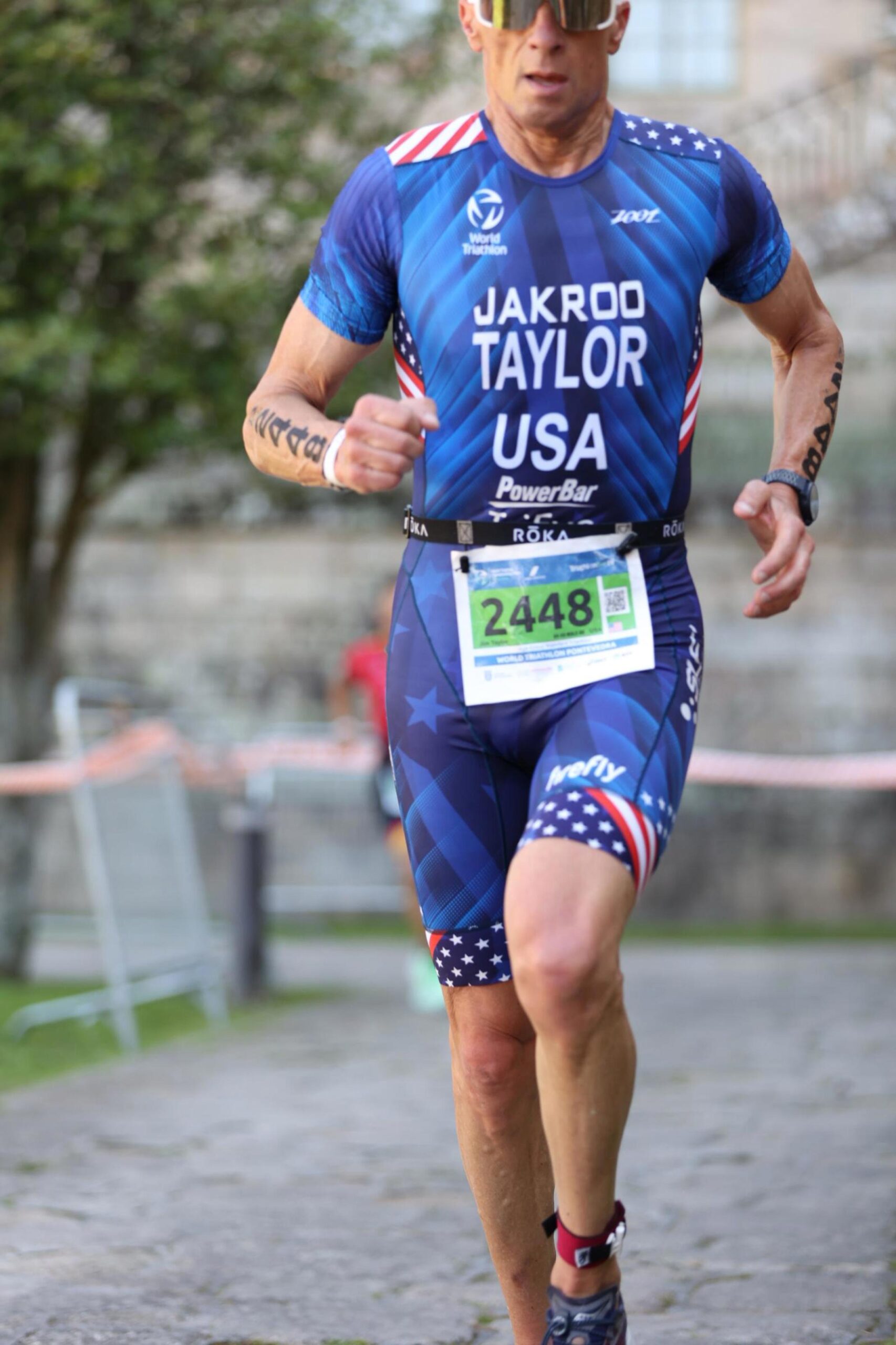The goal for every determined triathlete—the Holy Grail of our sport, you might say—is the ability to maintain or even increase effort and decrease (or at least minimize) the exertion pain you feel during hard![]() workouts and in races. The problem, as we can all attest to, is that it is extremely difficult to resist the pain you feel deep into a hard workout or toward the end of race.
workouts and in races. The problem, as we can all attest to, is that it is extremely difficult to resist the pain you feel deep into a hard workout or toward the end of race.
Achieving this elusive goal comes down to, oddly enough, an issue of evolution. Increasing your effort and resisting the pain you experience in training and races is a constant battle between your primitive brain (specifically, your amygdala) and your evolved brain (specifically, your prefrontal cortex, PFC for short).
A brief lesson in neuroanatomy (it won’t be on the test!). The amygdala is responsible for processing  information from the outside world, immediately identifying any threats to life, and, if so, instantaneously triggering our survival instinct and flight-or-flight reaction. This reaction produces psychological, emotional, and physiological changes that for eons helped us survive.
information from the outside world, immediately identifying any threats to life, and, if so, instantaneously triggering our survival instinct and flight-or-flight reaction. This reaction produces psychological, emotional, and physiological changes that for eons helped us survive.
The pre-frontal cortex only exists in humans and serves the purposes of weighing risks and rewards, assessing short- and long-term consequences, planning, and, most importantly, making deliberate choices that are in your best interests. In sum, the PFC gives us the capacity to resist our amygdala’s primitive—and no longer effective—urges and allows us to think, feel, behave, and perform in ways that will help us to not only survive, but also thrive in 2024 triathlon life.
We humans and, in fact, all living beings, have evolved to avoid pain at all costs because, for most of history, if living creatures experienced pain, death was likely to follow soon after. Unfortunately, what worked on the Serengeti 250,000 years ago when we first officially became Homo Sapiens doesn’t work in our triathlon endeavors in 2024.
worked on the Serengeti 250,000 years ago when we first officially became Homo Sapiens doesn’t work in our triathlon endeavors in 2024.
Here’s the challenge we face in training and races: Our amygdala has spent the last 250,000,000 years perfecting reactions to pain that increased our chances of survival. But, as I noted above, our PFC has only been around for about 250,000 years. In other words, our PFC is seriously outgunned by our amygdala! Moreover, our amygdala doesn’t know the difference between the pain we would have felt eons ago as primitive people and the pain we experience training for and racing triathlons.
Being able to push yourself to your limits, in either training or traces, comes down to your PFC’s ability to  minimize or override our primitive instincts, emotions, and reactions. Fortunately, there are a number of strategies and tools you can use in your triathlon life that can either prevent your amygdala from “lighting up” and taking over or reduce its sensitivity (and, thus, its power) when it experiences pain in your training and races.
minimize or override our primitive instincts, emotions, and reactions. Fortunately, there are a number of strategies and tools you can use in your triathlon life that can either prevent your amygdala from “lighting up” and taking over or reduce its sensitivity (and, thus, its power) when it experiences pain in your training and races.
Pre-workout or Race
A mistake triathletes can inadvertently make is to prime their amygdalae (that’s the plural form) prior to a challenging workout or a race with negative thoughts (“I really am not psyched for this workout.” or “This race is going to be really hard!”) or pre-workout or pre-race anxiety. In both cases, you are sending the message that your “life” is going to be threatened. In reaction to this message, of course your amygdala is going to marshal it’s 250,000,000 years of experience to prevent you from “dying” (remember it doesn’t the know the difference between pain indicating impending death and the pain you feel in a hard workout or a race). Even before the workout or race begins, it goes into DEFCON 1 (the term used to indicate the highest level of military readiness in preparation for an imminent attack). With this high state of alert, your PFC has little chance of intervening and calming the situation down. And, in this state, you have little chance of giving your best effort, in either a workout or race, and achieving your goals for the day.
going to marshal it’s 250,000,000 years of experience to prevent you from “dying” (remember it doesn’t the know the difference between pain indicating impending death and the pain you feel in a hard workout or a race). Even before the workout or race begins, it goes into DEFCON 1 (the term used to indicate the highest level of military readiness in preparation for an imminent attack). With this high state of alert, your PFC has little chance of intervening and calming the situation down. And, in this state, you have little chance of giving your best effort, in either a workout or race, and achieving your goals for the day.
One way to prevent your amygdala from going into DEFCON 1 before a workout or race is to preemptively  send the exact opposite message. You can tell your amygdala to “stand down,” before it gets the chance to “stand up” in the following ways:
send the exact opposite message. You can tell your amygdala to “stand down,” before it gets the chance to “stand up” in the following ways:
- The overall message is that your workouts and races are familiar, predictable, and in your control, in other words, you choose to do them even if they are difficult (in fact, because they are difficult!).
- Review your workout or race the night before and first thing in the morning so your primitive brain knows what to expect.
- Tell your primitive brain: “I’m choosing to do this workout” and “I’m excited about this workout!”
- Generate positive emotions about the workout or race.
- Do imagery of your race to inform your primitive brain what is to come (no surprises).
- Create and consistently implement training and race routines that make the upcoming workout or race familiar, predictable, and in your control for your amygdala to be aware of.
During the Workout or Race
As the difficult workout or race progresses, you are going to experience increasing discomfort that then rises to the level of exertion pain (remember that your amygdala doesn’t know the difference between various types of pain; it just “thinks” that you are going to die). This perceived threat to your life by the amygdala, as I noted above, unconsciously triggers your survival instinct and, with it, your fight-or-flight reaction. The immediate upshot is that you feel the need to slow down or stop to ease your pain and, as your amygdala believes, remove the threat to your life.
amygdala, as I noted above, unconsciously triggers your survival instinct and, with it, your fight-or-flight reaction. The immediate upshot is that you feel the need to slow down or stop to ease your pain and, as your amygdala believes, remove the threat to your life.
If your amygdala takes control at this point, your workout is basically over, and your race goals won’t be  achieved. It’s at this juncture that your PFC must continue to assert control over your amygdala. In other words, you must constantly send messages to your body that counter what your primitive brain is telling your body:
achieved. It’s at this juncture that your PFC must continue to assert control over your amygdala. In other words, you must constantly send messages to your body that counter what your primitive brain is telling your body:
- Overall message: “Don’t panic and trigger my survival instinct. I got this!”
- “It’s my choice to feel this pain.”
- “I want to feel this pain.”
- “I’ve got things under control.”
- “We’re not going to die.
Mental Tools for Your PFC to Use
There are many mental tools you can use to help your PFC to maintain dominance over your amygdala. For these tools to be effective, you must make a plan for when you will use them and then consistently use them until they become mental habits (meaning you automatically use them without any thought).
them until they become mental habits (meaning you automatically use them without any thought).
- Use your training and race routines (sends the message that all is familiar, predictable, and under control).
- Positive self-talk (“You can do this!).
- Control your breathing (sends the message that you have your body under control).
- Power words (“Strong,” “Tough”).
- Keywords and phrases (“Dig deep,” “Finish strong”).
- Generate inspiration and pride (positive emotions reduce the experience of pain).
- Relax your muscles again, sends the message that you have control of your body).
- Smile (releases neurochemicals that have a relaxing effect and reduces your pain).
- Tell yourself, “I choose to push my limits.” (sends the message that your amygdala doesn’t need to get involved.







